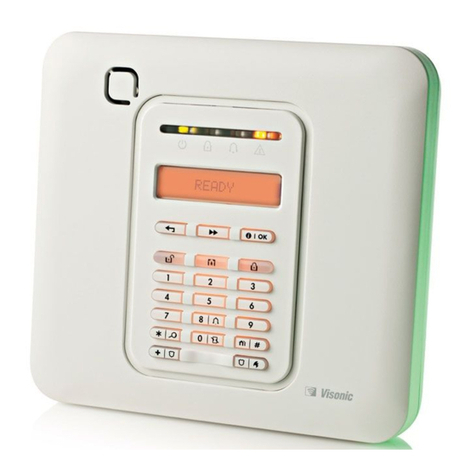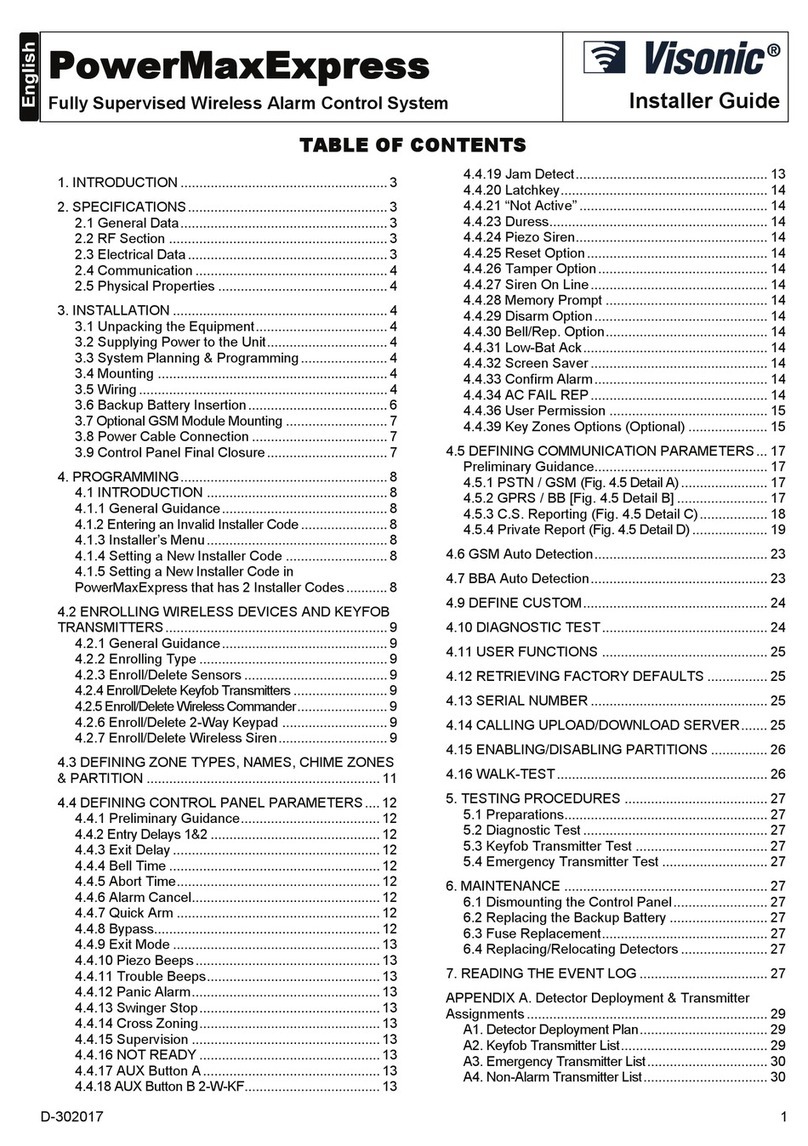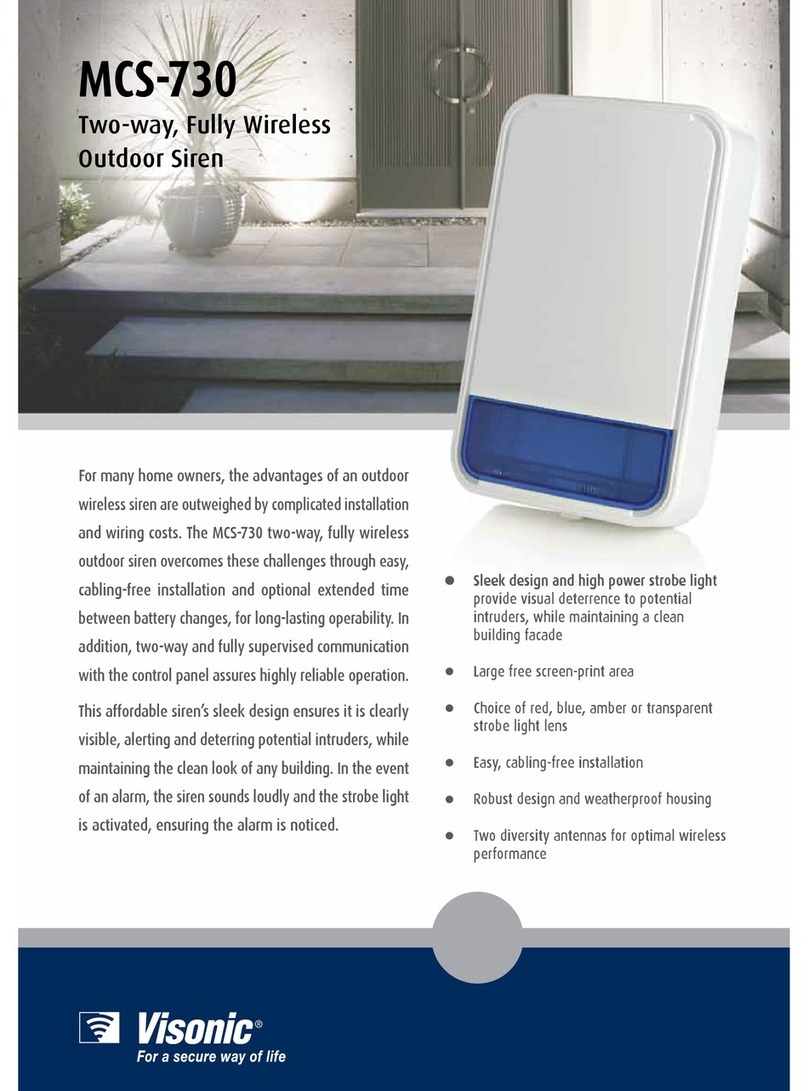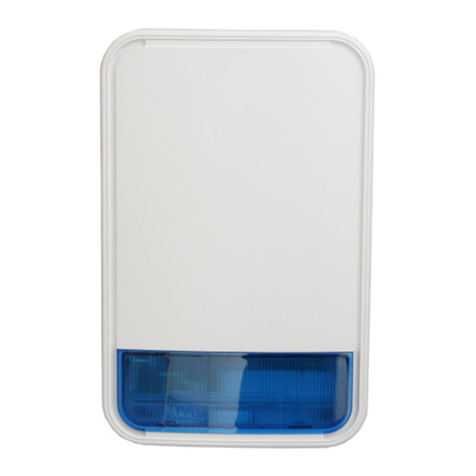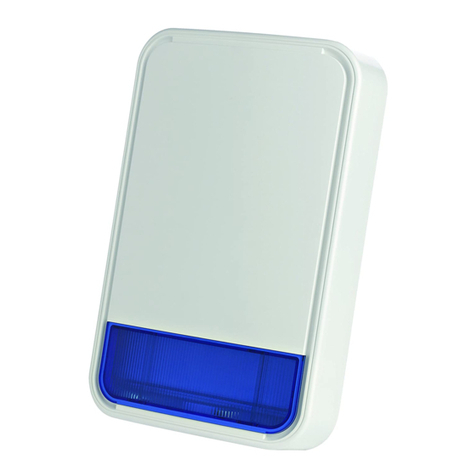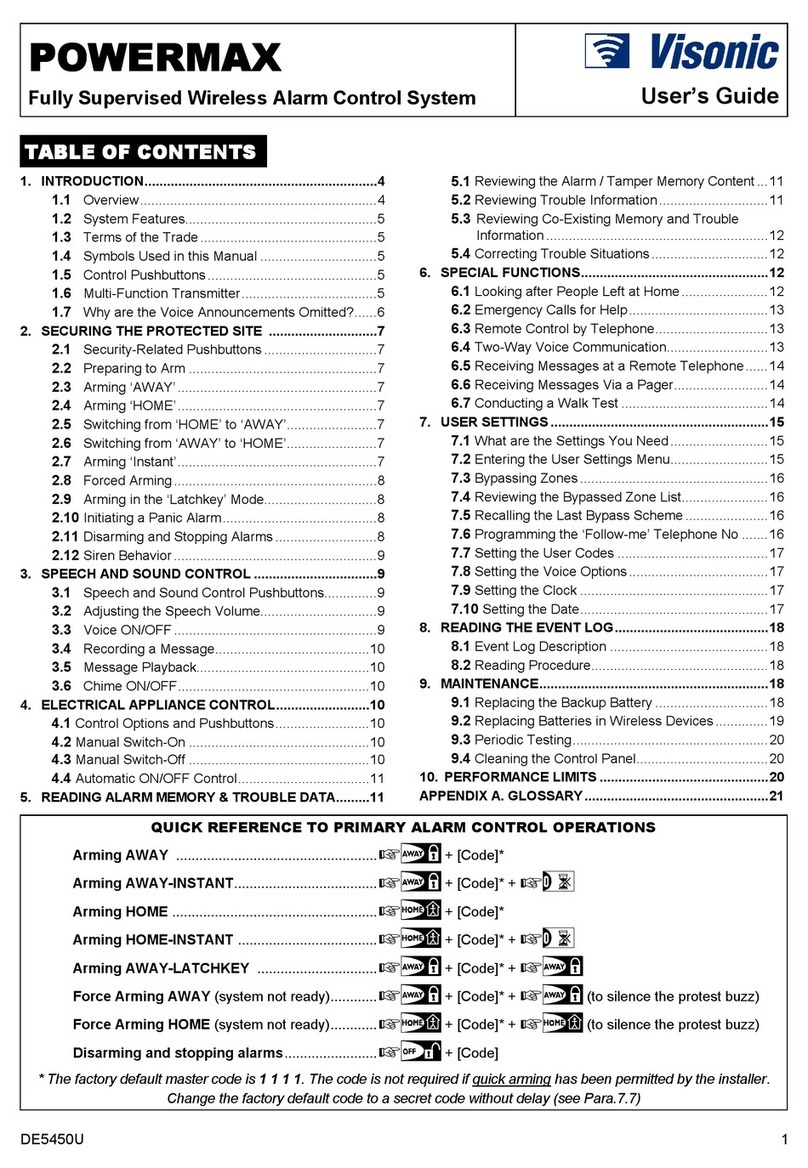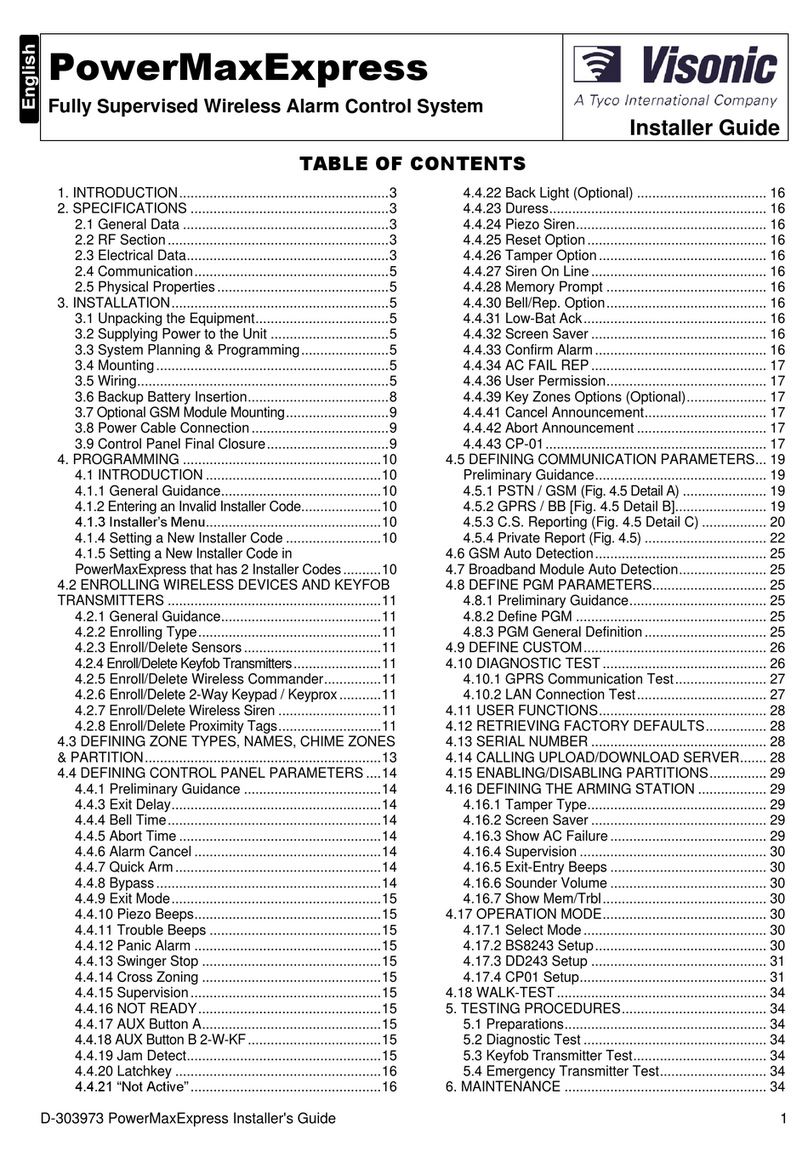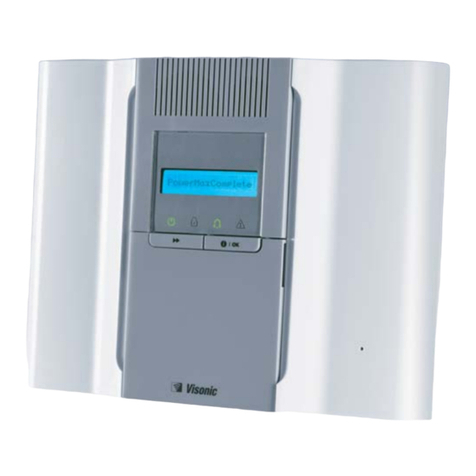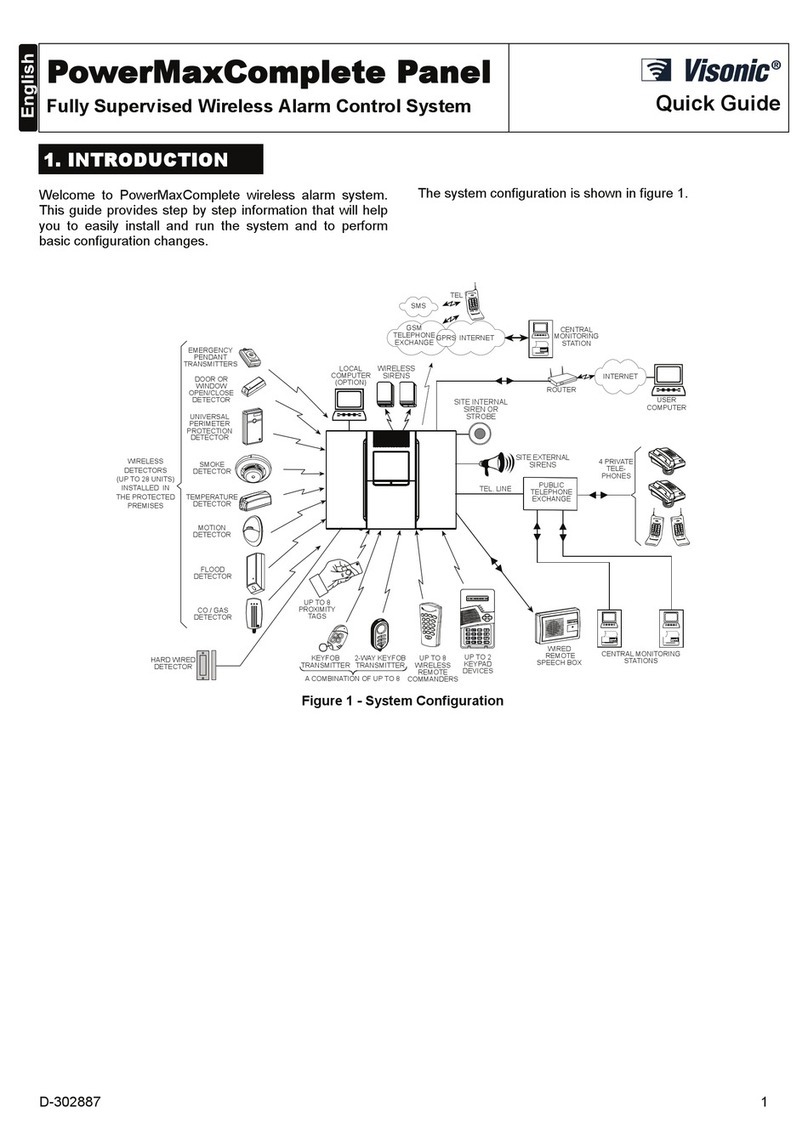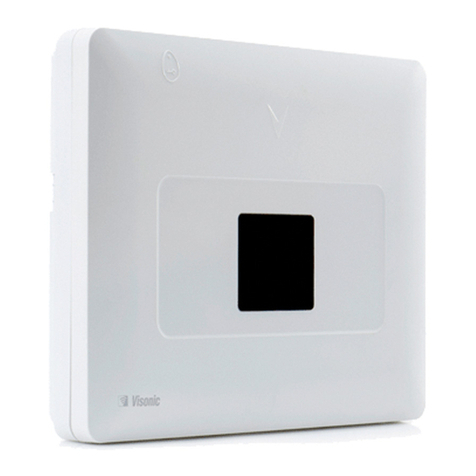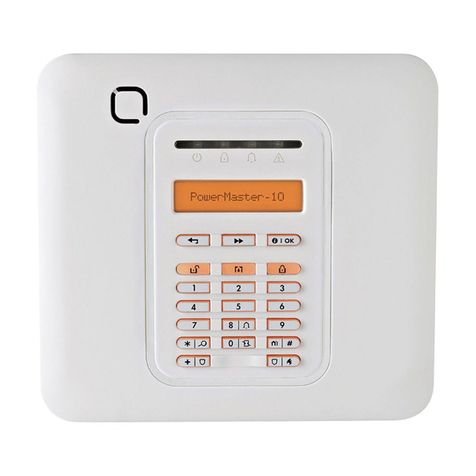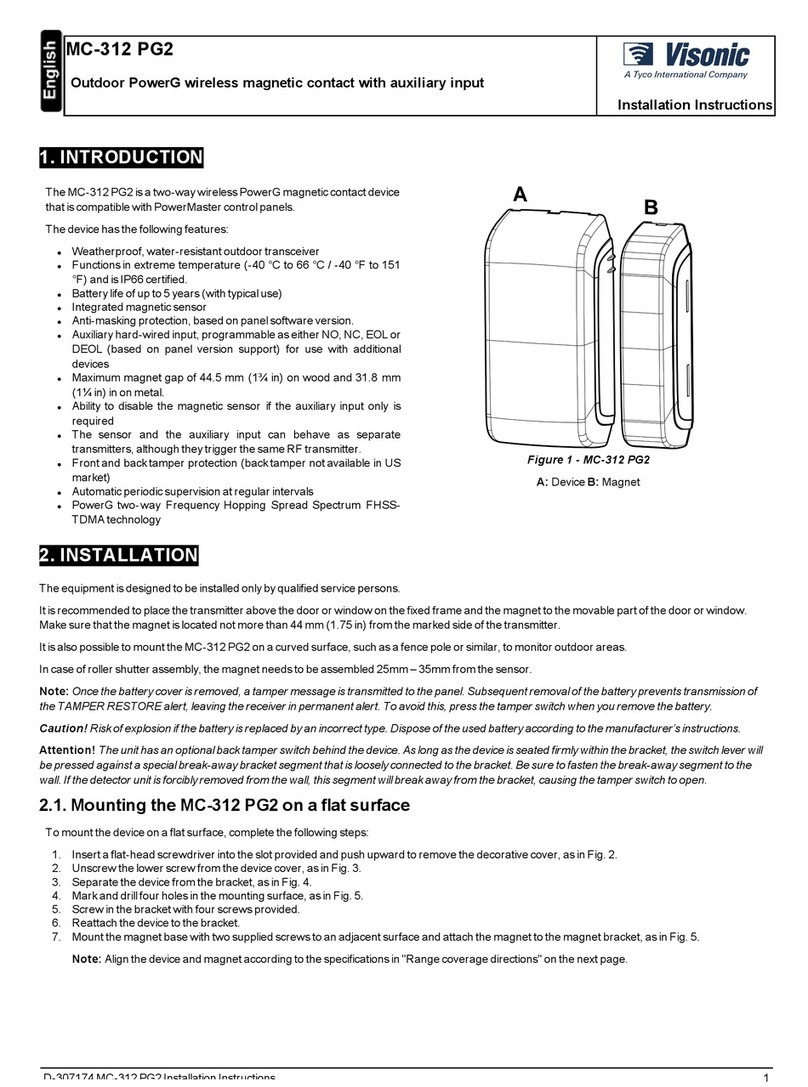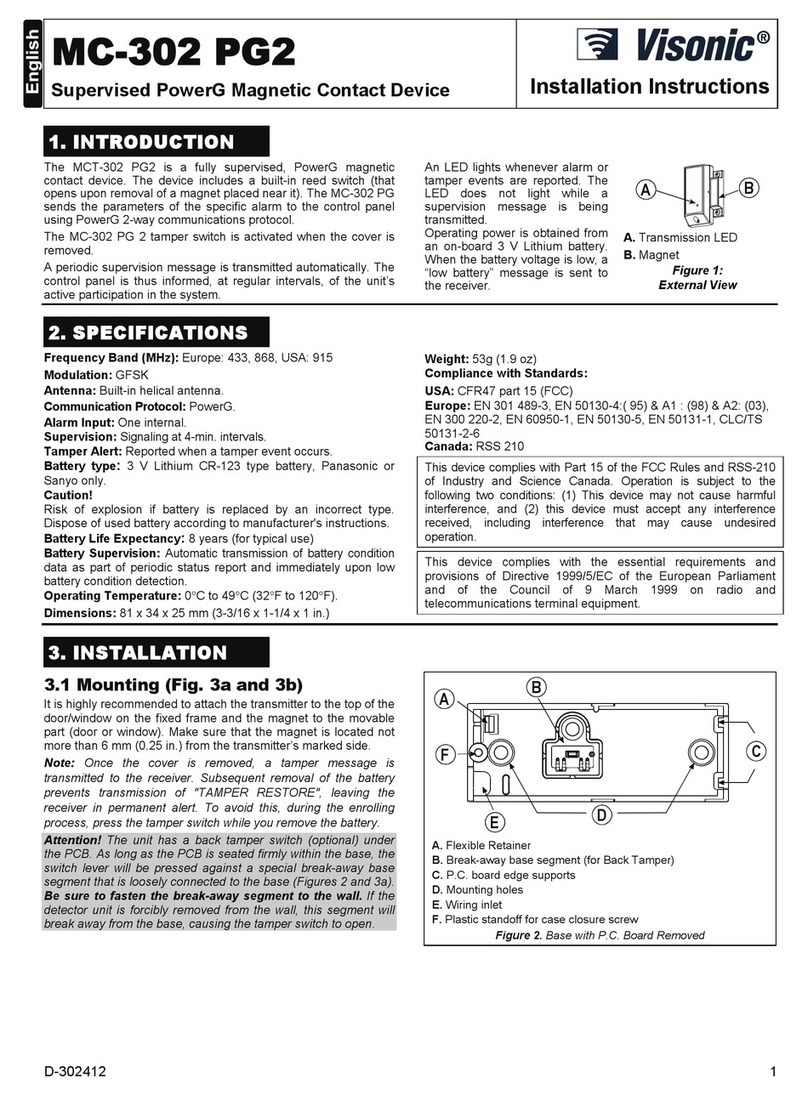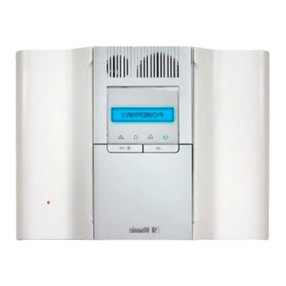2 D-300909
3.6 Test
A. Power up the system. The LEDs will flash alternately, indicating
that the detector is adapting itself to its present surroundings.
Stay at least 1m (3ft) away from the detector, until the 60
seconds startup period ends (until the LEDs stop flashing
alternately).
B. Enter the detector’s field of view and perform walk test in the
entire coverage area, while observing the red LED (see figure 2).
For TOWER 12, observe also the green LED for MW and PIR
detections (see "LED indications" table in the specifications). The
red LED will light for 2-3 seconds each time the alarm output is
activated (see figure 2).
Important! Instruct the user to perform walk test at least once a
week to verify proper operation of the detector.
C. Tape a piece of cardboard to the detector’s front to deliberately
mask the optical window. After 30 seconds, the yellow LED should
light (the TRB relay drops out).
D. Remove the masking from the detector’s front. The yellow LED
should extinguish (after a few seconds).
4. SPECIAL COMMENTS
Even the most sophisticated detectors can sometimes be defeated or may
fail to warn due to: DC power failure / improper connection, tampering with
the optical system, decreased sensitivity in ambient temperatures close to
that of the human body and unexpected failure of a component part.
The above list includes the most common reasons for failure to detect
intrusion, but is by no means comprehensive. It is therefore
recommended that the detector and the entire alarm system be checked
weekly, to ensure proper performance.
An alarm system should not be regarded as a substitute for insurance.
Home and property owners or renters should be prudent enough to
continue insuring their lives and property, even though they are protected
by an alarm system.
This device has been tested and found to comply with the limits for a
Class B digital device, pursuant to Part 15 of the FCC Rules. These limits
are designed to provide reasonable protection against harmful
interference in residential installations. This equipment generates, uses
and can radiate radio frequency energy and, if not installed and used in
accordance with the instructions, may cause harmful interference to radio
and television reception. However, there is no guarantee that interference
will not occur in a particular installation. If this device does cause such
interference, which can be verified by turning the device off and on, the
user is encouraged to eliminate the interference by one or more of the
following measures:
– Re-orient or re-locate the receiving antenna.
– Increase the distance between the device and the receiver.
– Consult the dealer or an experienced radio/TV technician.
WARNING! Changes or modifications to this unit not expressly
approved by the party responsible for compliance could void the user’s
authority to operate the equipment.
W.E.E.E. Product Recycling Declaration
For information regarding the recycling of this product you must contact the
company from which you orignially purchased it. If you are discarding this
product and not returning it for repair then you must ensure that it is
returned as identified by your supplier. This product is not to be thrown away
with everyday waste.
Directive 2002/96/EC Waste Electrical and Electronic Equipment.
The technical documentation as required by the European Conformity Assessment
procedure is kept at:
UNIT 6 MADINGLEY COURT CHIPPENHAM DRIVE KINGSTON MILTON KEYNES MK10
0BZ. Telephone number: 0870 7300800, Fax number: 0870 7300801
ESPAÑOL
1. INTRODUCCIÓN
TOWER 10 AM PIR y TOWER 12 AM Doble Tecnología, son
detectores profesionales anti-vandálicos y Anti-Masking, diseñados
para su utilización en comercios e industria, proporcionando una gran
cobertura así como una mayor resistencia en entornos agresivos,
gracias al empleo de varias tecnologías revolucionarias, patentadas.
Ambos detectores son conformes con EN 50131 Grado 3.
Características:
•Tecnología V-slot®con ventana reducida (patente pendiente)
aportando una mayor Resistencia mecánica y protección ante
falsas alarmas (patente pendiente).
•Tecnología basada en "Obsidian Black Mirrors"™ y diseño de espejo
" Elíptico / Parabólico" proporcionando Resistencia a luz Blanca de
mas de 15,000 LUX y una cortina múltiple-sólida que proporciona
una respuesta en sensibilidad mejor del 50% comparada con otras
ópticas de espejo (varias patentes pendientes).
•Tecnología Anti-Masking mediante Infra-Rojos Activos, proporciona
la mas avanzada protección frente intentos de enmascaramiento
(patente pendiente).
•Espejo Opcional intercambiable, Cortina Largo Alcance con una
cobertura de 35m x 2.5m (115ft x 8.2ft) para el TOWER-10 y 25 x 2m
(82 x 6.5ft) para el TOWER-12.
•Mejoras para el instalador:
Módulo interno para selección de resistencias final de línea E.O.L.
para salidas de alarma, problema y tamper.
Terminales tipo Plug-in para una más fácil instalación del
precableado.
Sistema de cierre mediante deslizamiento con un tornillo imperdible.
Montaje extendido en altura 1.5 - 4m (5 - 13 ft.).
Indicación de bajo valor de tensión de alimentación.
Entrada de Test de paseo controlada remotamente.
Soportes de montaje opcionales.
Área de protección ajustable mediante Selector de Rango (TOWER
12 AM).
•Control por Microprocesador, procesamiento de señal digital TMR
con compensación de temperatura digital de doble pendiente.
•Tamper Frontal y posterior.
•Verdadera "Creep zone" óptica ángulo cero.
•Inmunidad a mascotas (18Kg/40lb) usando un filtro especial "pet
mask".
•Auto diagnóstico para ambos detectores PIR y Microondas.
2. ESPECIFICACIONES
OPTICA
Tipos de espejo (ver Fig. 2)
Gran Angular Cort. Largo Alcance
TOWER 10 & 12 TOWER
10 TOWER 12
Cobertura
25mx30m / 90º 35m / 5º 25m / 5º
Campo Alejado (FOV)
Medio Campo (FOV)
11 cortinas
6 cortinas
1 cortina
1 cortina
Posición Cont. eventos 1 ó 2 LR
Montaje:
Tipo: Superficie, esquina ó a 45º sobre pared.
Altura: 1.5 - 4m (5-13 ft.) sin soporte.
Ajuste Vertical: Proporciona tres ajustes verticales dependiendo de
la altura de instalación y rango de cobertura.
ELECTRICAS
Tipo Sensores:
PIR: sensor piro-eléctrico de elemento dual y bajo ruido.
MW: Módulo Doppler en Banda X.
Para UK - 10.687 Ghz, para EU / USA – 10.525 Ghz. Para
German/Czech 9.35 MHz
Tensión de Alimentación: 8 – 16 VDC.
Detección de Baja tensión: Si la tensión es inferior a 7.5 VDC.
Corriente de Alimentación:
Standby @ 12 VDC: 12mA (TOWER 10 AM). 15 mA (TOWER 12).
Máximo: 14mA (TOWER 10 AM). 18 mA (TOWER 12).
Periodo Alarma: 2 a 3 seg.
Retardo detección de Masking: 30 seg.
Entrada para activación remota de LED (TST): Alta Impedancia.
Afecta a los LEDs de operación solo si el selector interno de LED
esta en la posición OFF.
Salidas:
Salida Alarma: Relé Estado Sólido . NC, 100 mA / 30 V,
resistencia interna máxima 35. "Abierto" durante 2 – 3 seg. en caso
de alarma, masking ó fallo total de alimentación.
Salida Problema: Relé Estado Sólido. NC, 100 mA / 30 VDC,
resistencia interna máxima 35 ohm. "Abierto" en caso de fallo auto-
diagnóstico, evento Anti-Mask, bajo voltaje ó fallo completo de
alimentación.
Salida Tamper: NC, 50mA / 30 VDC. "Abierto" al abrir la tapa del
detector ó al desprenderlo de la superficie de montaje.
Incluye Circuito de Resistencias Final de Línea: Selección de tabla de
resistencias serie para cada una de las tres salidas. Valores Resistivos:
0 Ohm (Selecc. Fábrica), 1K, 2.2K, 4.7K, 5.6K Ohm (ver fig. 5).
